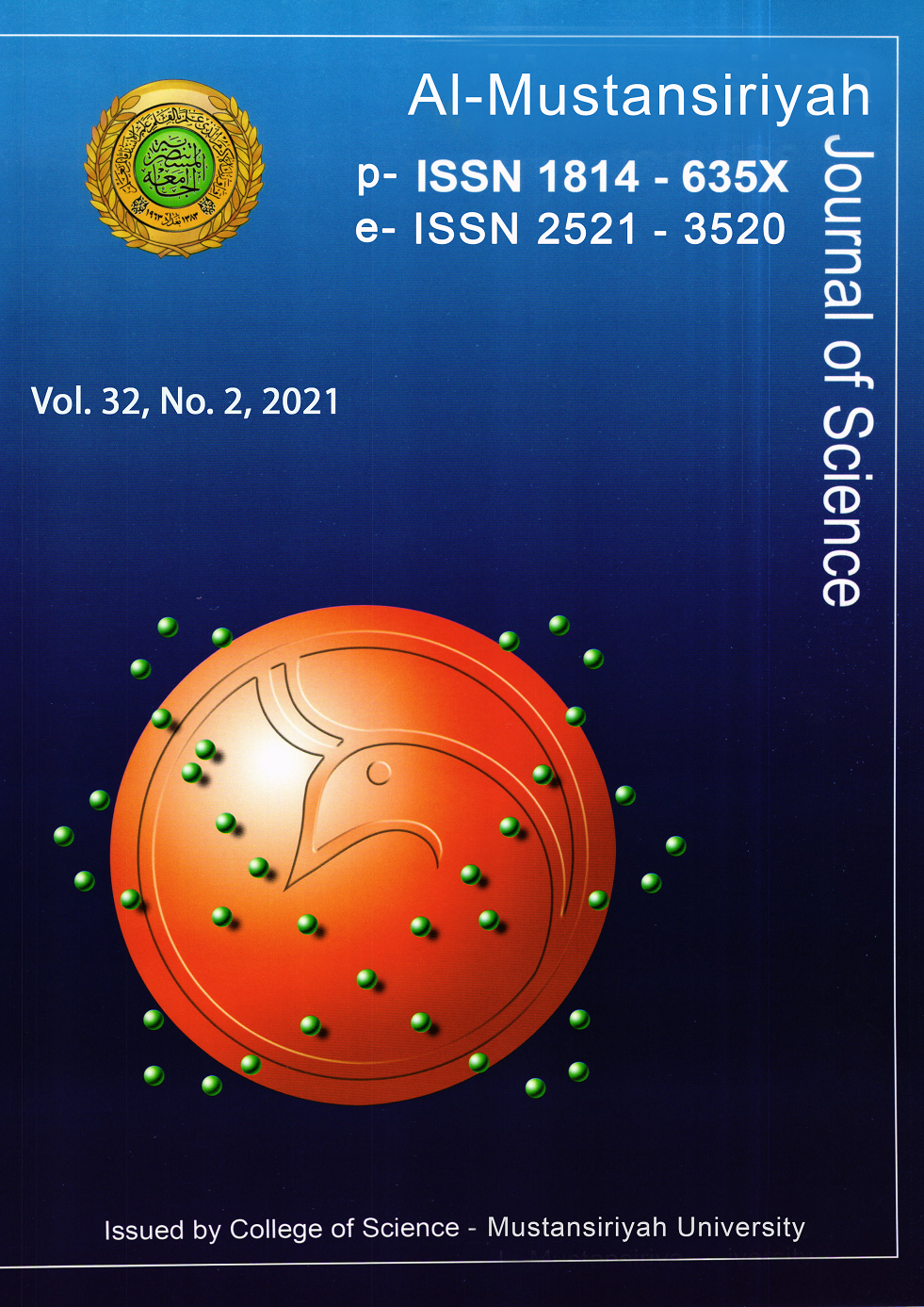Modelling Heat Transfer in Solar Distiller with Additional Condenser Studying
DOI:
https://doi.org/10.23851/mjs.v32i2.979Keywords:
Heat energy, heat transfer, solar distillerAbstract
The sun is the main source of energy that reaches the surface of the earth in the form of electromagnetic radiation called solar radiation and when it reaches the outer surface of the glass hood of the solar distillation, the process of energy transferring as the heat begins. the energy transfer process between parts of solar distillates greatly controls its performance, so the greater amount of energy gained and the less energy lost, leads to higher productivity and efficiency of the solar distillery. in this paper, a mathematical model was constructed to calculate the amount of thermal energy in each part of a monoclinic solar distiller equipped with an additional capacitor during its operation. as a result of this model showed that the temperature, after a series of heat energy exchanges between the glass cover and all the internal parts of the distillate, with the absorbent part at the base of the distillate, exhibited the same behavior, which is increasing in its temperature steadily during the first hours of the day from (32.5-41.7 ) at (08:30 am) in the morning down to its top value (61.4-76.7 ) at (02:30 pm) and decline after this hour in the same bullish pattern. this is due to the greater difference between the amount of energy lost and acquired by the absorbent portion during the same daylight hours, as the amount of energy gained increases and the amount of lost energy decreases, leading to the highest energy gain and the least energy lost by the absorbent part at (02:30 pm), except the outer part of the additional condenser, which followed a similar behavior of air temperature, with its temperature gradually increasing slightly during the first hours of the day from (27 ) at (08:30 am) until it reached its peak (36.2 ) at (01:30 pm), then it decreases after this time slightly. this slight rise and slight decrease are due to the constant state of thermal balance between the two ends of the additional condenser by the heat exchange process between the outer part of the additional condenser and the cooling water.Downloads
References
Sangroya, D.; Nayak, J.K. Development of wind energy in India. Int. J. Renew. Energy Res. 2015, 5, 1-13.
Sengar, S.H.; Khandetod, Y.P.; Mohod, A.G. New innovation of low cost solar still. Eur. J. Sustain. Dev. 2012,1, 315-352.
Xiao, G., Wang, X. A review for solar stills for brine desalination. Int. J. Energy and environment, 2013, 103, 642-652.
Arunkumar, T.; Vinothkumar, K.; Ahsan, A.; Jayaprakash, R.; Kumar, S. Experimental Study on Various Solar Still Designs. ISRN Int. J. Renew. Energy Res, 2012, 1-10.
Ahsan, A.; Islam, K.M.S.; Fukuhara, T.; Ghazali, A.H. Experimental study on evaporation, condensation and production of a new Tubular Solar Still. Desalination 2010, 260, 172-179.
Rajesh, V.R. Performance evaluation of a solar desalination system integrated with a fresnel lens concentrator.Int. J. Renew. Energy Res. 2016, 6, 250-253.
Tripathi, Rajesh, Tiwari, G.N, performance Eraluation of A solar distilled by vsing the concept of colar fraction, Desalination ,2016, Vo10, P.69 -80.
Abdel-Salam TM, Tiwari SN and Mohieldin TO. Three-dimensional numerical study of a scramjet combustor. In: 40th AIAA aerospace sciences meeting & exhibit, AIAA, Reston, VA, 2002.
Sathyamurthy, R.; El-Agouz, E. Experimental analysis and exergy e_ciency of a conventional solar still with Fresnel lens and energy storage material. Heat Transf. Asian Res. 2019, 48, 885-895.
Abdelsalam, T.I.; Abdel-Mesih, B. An Experimental Study on the E_ect of Using Fresnel Lenses on the Performance of Solar Stills. In Proceedings of theInternational Congress on Energy E_ciency and Energy Related Materials (ENEFM2013), Antalya, Turkey, 9-12 October 2013; pp. 353-362.
Huang X, Yu Y‐H, Cheng Z. Facile polypyrrole thin film coating on polypropylene membrane for efficient solar‐driven interfacial water evaporation. RSC Adv. 2017, 7, 9495‐ 9499.
Li X, Xu W, Tang M, et al. Graphene oxide‐based efficient and scalable solar desalination under one sun with a confined 2D water path. Proc Natl Acad Sci U S A. 2016; 113: 13953‐ 13958.
Liu K‐K, Jiang Q, Tadepalli S, et al. Wood‐graphene oxide composite for highly efficient solar steam generation and desalination. ACS Appl Mater Interfaces. 2017; 9: 7675‐ 7681.
Ni G, Li G, Boriskina SV, et al. Steam generation under one sun enabled by a floating structure with thermal concentration. Nat Energy. 2016; 1: 16126.
Al Doori WH. Numerical estimation of pressure drop and heat transfer characteristics in annular‐finned channel heat exchangers with different channel configurations. Heat Transfer Asian Res. 2019; 48(4): 1280‐ 1291.
Downloads
Key Dates
Received
Accepted
Published
Issue
Section
License
Copyright (c) 2021 Al-Mustansiriyah Journal of Science

This work is licensed under a Creative Commons Attribution 4.0 International License.
(Starting May 5, 2024) Authors retain copyright and grant the journal right of first publication with the work simultaneously licensed under a Creative Commons Attribution (CC-BY) 4.0 License that allows others to share the work with an acknowledgement of the work’s authorship and initial publication in this journal.






















